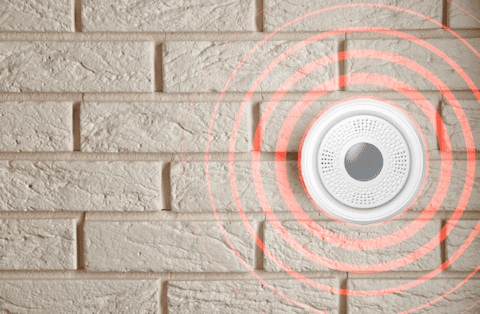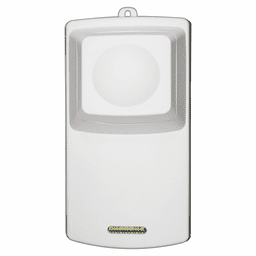Alarm Sirens - GeoArm Security®
Indoor/Outdoor Sirens
Audible Noise-Making Alerts!
An alarm siren is typically used as a warning sound to alert people to a potential threat or danger. It can be used as a security measure to deter intruders or notify individuals of a potential intrusion. It can also be used in emergency situations, such as a fire alarm or severe weather alert, to warn people to take action and seek safety. Alarm sirens can produce sound levels that range from around 75 decibels to over 130 decibels, depending on the type of siren and the purpose it is being used for. Most industrial and commercial alarm sirens produce sound levels between 110 to 130 decibels, while residential alarm sirens typically have a sound output ranging from 75 to 110 decibels.
The main difference between a wired sirens and a wireless sirens is the method they use to transmit the alarm signal. Wired alarm sirens are physically connected to the security system through a wired link, whereas wireless alarm sirens use radio frequencies to communicate with the security system. Wired alarm sirens are generally considered to be more reliable than their wireless counterparts because they are less susceptible to interference and signal loss. Additionally, the wire provides a constant power source, which eliminates the need to replace batteries or recharge the siren. On the other hand, wireless alarm sirens offer more flexibility when it comes to installation and placement, as they do not require any physical connections. This makes them easier to install and relocate, and they can be placed in areas where running wires may not be feasible, such as in attics or basements. In terms of advantages, wired alarm sirens are generally more cost-effective than wireless sirens, while wireless sirens offer greater flexibility and convenience.

Common Uses for Alarm Sirens?
1. Intrusion Detection - They sound an alarm when unauthorized entry is detected, alerting occupants and potentially scaring off intruders.
2. Fire and Smoke Alarms - Integrated with smoke detectors, they provide an audible alert in case of fire, helping to ensure a quick evacuation.
3. Panic Alarms - They can be activated manually in case of an emergency, such as a break-in or other threat.
4. Perimeter Security - They alert when someone breaches the perimeter of a property, such as climbing a fence or entering a restricted area.
5. Deterrence - The loud sound and sometimes flashing lights can deter potential intruders from attempting to enter the property.
6. Community Alert - They can alert neighbors and passersby to a potential security breach, increasing the likelihood of intervention or reporting.
Installation Tips for Alarm Sirens?
1. Location Selection - Choose a location that is central and unobstructed to ensure the sound can travel effectively throughout the area. Ideally, it should be placed high up on a wall or ceiling to prevent tampering.
2. Weatherproofing - If the siren is to be installed outdoors, ensure it is weatherproof or housed in a weatherproof enclosure to protect it from the elements.
3. Power Supply - Ensure the siren is connected to a reliable power source. If itís a wired siren, check that the wiring is secure and not exposed to potential damage. For wireless sirens, ensure the batteries are fresh and check them regularly.
4. Compatibility - Verify that the siren is compatible with your alarm system. Some systems may require specific types of sirens or additional modules for integration.
5. Testing - After installation, test the siren to ensure it activates correctly when the alarm is triggered. Regular testing should be part of your maintenance routine.
6. Volume Settings - Adjust the volume settings if possible, to ensure it is loud enough to alert occupants and deter intruders, but not so loud that it causes unnecessary disturbance.
7. Regulatory Compliance - Check local regulations regarding noise levels and ensure your siren complies with these rules to avoid fines or complaints.
8. Tamper Protection - If available, enable any tamper protection features to alert you if someone tries to disable or remove the siren.

Companies
 Month-to-Month Subscription Plans
Month-to-Month Subscription Plans Takeover a Wide Range of Control Panels
Takeover a Wide Range of Control Panels Choose from Non-Proprietary Equipment
Choose from Non-Proprietary Equipment Optional 24/7 Professional Central Station
Optional 24/7 Professional Central Station More Flexible DIY Brands and Services
More Flexible DIY Brands and Services Nationwide Coverage is Supported
Nationwide Coverage is Supported Inexpensive Remote Technicians
Inexpensive Remote Technicians



























